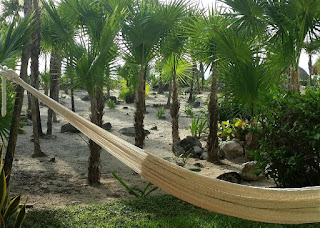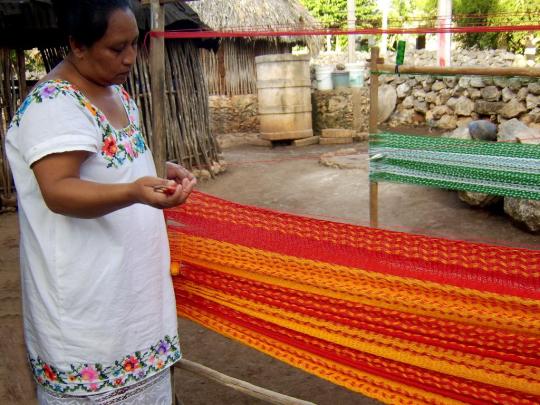A review of the most important uses given to the
hammock in rural areas even today, allows us to enter the daily life of the
communities and realize how this object is a point of confluence of social
life. These uses are:
- For human reproduction
- Such as delivery table
- Like cradle
- Like hunting assistant
- As an instrument of healing
- Resource like Shelling
- As break through
With
respect to the hammock as a place of human reproduction we will mention that
among some families in rural areas, it is customary on the eve of marriage, the
bride urda a "big hammock" to share with her husband after wedding .
For
people of the city can it seem incredible that a hammock can be used as a
delivery table, but for the vast majority of women of the people who for
generations have been born, watched them grow and die to his family in a
hammock, it is the most natural.
Midwives
in rural areas, like pregnant women, believe that giving birth in a hammock is
much more comfortable than a bed. The first argument is used with respect to
the adaptability of the hammock to your body and at the time of birth, the
pregnant has everything needed to grab hold to force.
On
the other hand, for a pregnant woman it is much more comfortable getting in and
out of a hammock that a bed because the first, besides being much cooler, can
be placed at the desired height.
The
use of the hammock as the cradle is a fairly common practice, even outside of
rural areas. This is due to the characteristics of the hammock, to which you
can upload the banks by a knot making it a safe and cool place for kids. Thus
they put them at the same time, away from the ground and animals. In addition
to all the above advantages, the use of the hammock as the cradle allows the
mother sit with your child and rocking, which so far can not be done in any
conventional crib.
The
hammock as assistant hunting also plays an important role, as we know this
activity is part of the survival strategies of families in rural areas. The
hunt is carried out in two different ways: one is called "make
whipped" and the other "to spy". The latter is performed during
or shortly after the rainy months and is finding somewhere where, naturally,
water is stored; Nearby, the hunter chooses a tree to wait for prey.
So,
you can hang your hammock between the branches of trees to make waiting more
bearable.
The
technique where the hammock is used as a tool to cure some backaches, unfortunately
is not widespread. However some families use and involves winding the hammock
around the painful art of the person (who is standing) and pull the ends of the
hammock so that this does pressure. Families who have used the hammock in this
way think that with pressure, the bones back into place.
In
Yucatan, as in the rest of the country, the diet is based on consumption of
grains, mainly corn and beans. Hammocks made with ancient techniques, or thresh
the henequen allow faster and with less difficulty than with your hands. The
technique involves placing inside the hammock what you want Shelling, close
well and hit it with a stick, so that the grains are falling down and peel
stays in the hammock. Currently not many families resort to this strategy,
because they do not have thick hammocks as before and current risk of breaking.
The
use of the hammock to sit is also an ancient custom in rural areas. The
lower-income families generally have only one table and two or three chairs and
in some cases even have these things, because traditionally sit on benches,
especially when the food is done in around a small three-legged table and by
the stove where tortillas are made.
Because
customs described above, the chairs are almost never enough for all family
members and less for visits, so the hammocks are used as a seat plus they are
much more comfortable.
The
fact that get a visit will yield a chair or bench is a sign of courtesy and
kindness, but be offered a hammock goes beyond that, almost always it means a
gesture of trust and acceptance the hosts.
Besides
all the uses that have been mentioned, one of the most important remains the
use of the hammock to rest comfortably all night, in this regard, older people
think that hammocks made with threads of agave are much better than cotton or
synthetic fibers, as the latter in the hot season are very hot and the cold are
very cold. In addition, under the rocking in nylon can not be placed pieces of
medium firewood pinned to sleep with pleasant temperatures, as they run the
risk of heat synthetic fiber melts and the person falling off the hammock, as
has happened to some.











